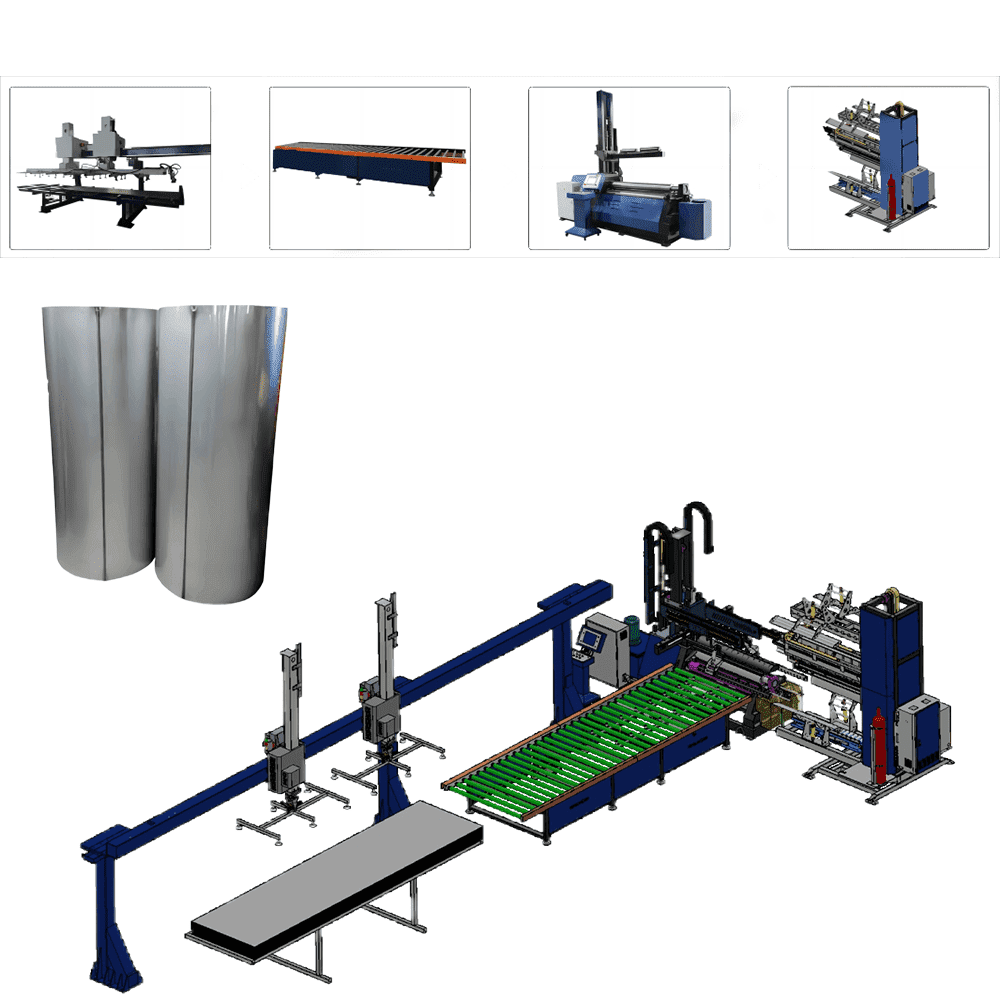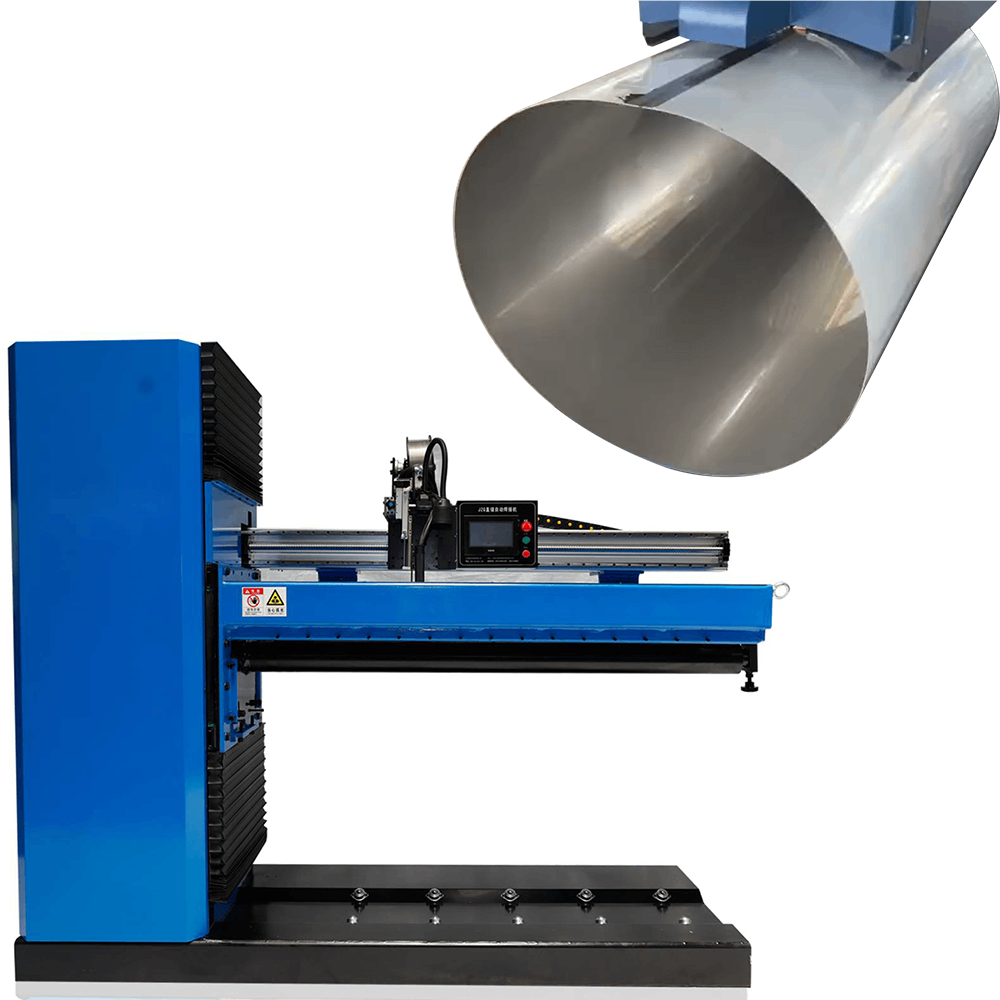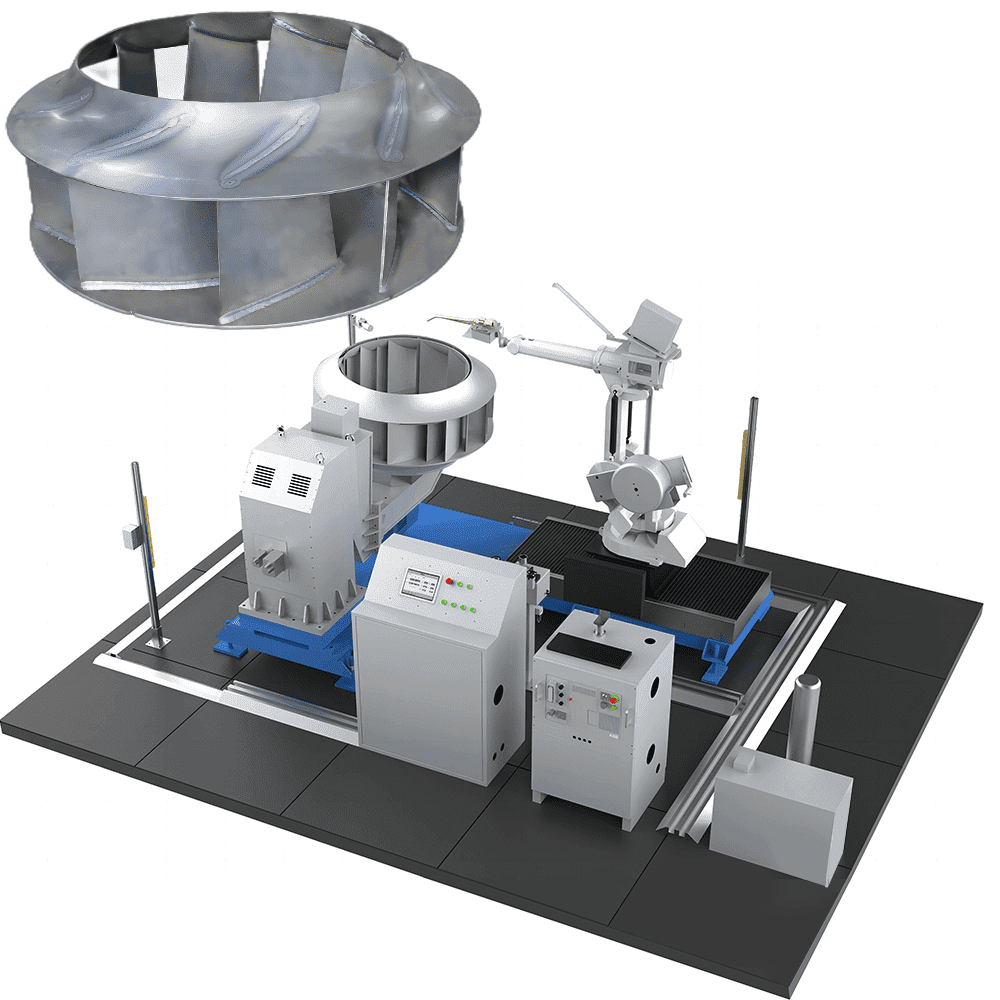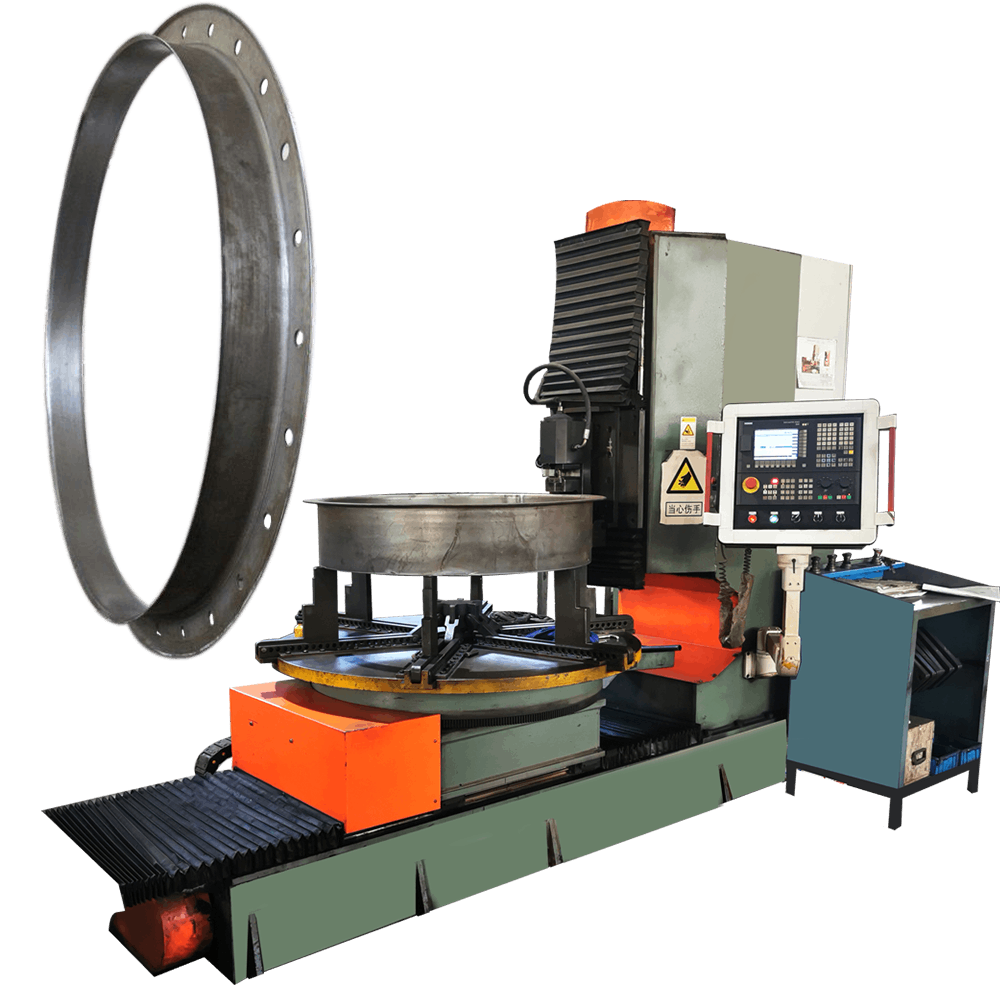How To Process Industrial Centrifugal Fans Housing?
Industrial fans are a critical component in numerous industries, providing essential ventilation, cooling, and air movement functions. Among the various types of industrial fans, centrifugal fans stand out for their efficiency and versatility. This blog delves into the intricacies of industrial centrifugal fans, focusing on the manufacturing and welding of Industrial Fans Housing, the application areas, and their overall composition, with insights from leading supplier Altron.
Overview of Industrial Centrifugal Fans
Centrifugal fans, also known as radial fans, operate by converting kinetic energy into potential energy, using a rotating impeller to increase the velocity of an air stream. The air stream is then guided through a housing and expelled at a 90-degree angle from the intake, providing high-pressure airflow.
Importance in Various Industries
Centrifugal fans are indispensable in industries like HVAC, chemical processing, and power generation, where they ensure proper ventilation, reduce heat, and maintain air quality. Their robust construction and ability to handle high-pressure applications make them ideal for demanding environments.
Types of Centrifugal Fans
There are several types of centrifugal fans, including forward-curved, backward-curved, and radial-bladed fans. Each type is designed for specific applications, offering varying levels of efficiency, pressure, and noise levels.
Method for Manufacturing Centrifugal Fan Casing
The casing or housing of a centrifugal fan is crucial for its performance, protecting internal components and directing airflow. Manufacturing this component involves precision and advanced technology.
Welding for Centrifugal Fan Housing
Welding is a critical step in the manufacturing of centrifugal Industrial Fans Housing. It ensures the structural integrity and durability of the fan, making it capable of withstanding high operational pressures and temperatures.
Auto Welding Machine for Centrifugal Fan
Altron’s auto welding machine for centrifugal fan casing can handle casings with a radius of up to 2000mm and a maximum load of 2 tons. This machine significantly reduces the reliance on skilled welding workers. After spot welding and assembling the fan casing, workers place it on the rotating platform of the welding machine. The machine’s camera and laser system automatically identify the weld position and produce the welding track, ensuring precision and consistency.
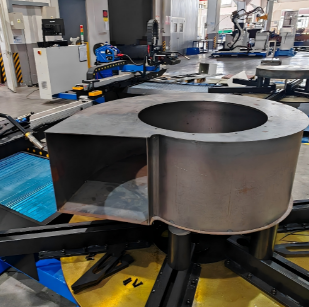
Dual-Gun Centrifugal Fan Casing Laser Welding Machine
The dual-gun centrifugal fan casing welding machine from Altron introduces a control method that eliminates the need for programming. By inputting the maximum and minimum radius, length, and width of the casing’s straight edge into the machine interface, the welding process can begin. Equipped with a profiling function, the machine ensures stability and reliability, correcting weld deviations in real-time to achieve the best welding results.
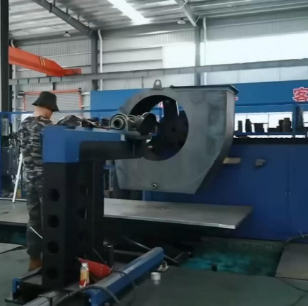
Gantry Stiffener Auto Vision Welding Machine
Designed for welding side panels and reinforcements in large industrial centrifugal classifiers and high-pressure fans, Altron’s gantry reinforcement automatic welding machine is an efficient solution. The gantry structure reduces space waste, simplifying the welding process and improving productivity. This machine is essential for applications requiring high-strength shell parts, ensuring high-quality welding and structural integrity.
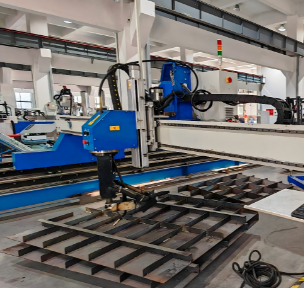
Forming for Centrifugal Fan Housing
Forming the Industrial Fans Housing of a centrifugal fan involves shaping metal sheets into the desired configuration. This process requires precision to maintain the structural integrity and aerodynamic properties of the fan.
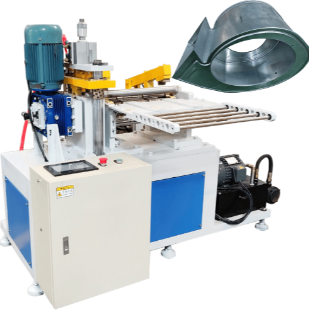
How to Weld Centrifugal Fan Housing
Welding the Industrial Fans Housing of a centrifugal fan involves several steps to ensure a strong and durable bond. The process starts with preparing the metal surfaces, ensuring they are clean and free of contaminants. Spot welding is used to assemble the parts before the final welding process.
Preparation and Setup
Proper preparation is crucial for successful welding. This includes selecting the right welding equipment, setting the correct parameters, and ensuring the metal surfaces are adequately cleaned and aligned.
Spot Welding and Assembly
Spot welding is used to temporarily join the parts of the Industrial Fans Housing. This step allows for adjustments and ensures the parts are correctly positioned before final welding.
Final Welding and Inspection
The final welding process involves using either manual or automated welding techniques to complete the joints. After welding, the housing undergoes inspection to ensure the welds are strong and free of defects.
Application Areas of Industrial Centrifugal Fans
Industrial centrifugal fans are used in a wide range of applications due to their efficiency and versatility. They are essential in maintaining optimal conditions in various industrial environments.
HVAC Systems
In HVAC systems, centrifugal fans are used for ventilation, air conditioning, and heating. They ensure proper air circulation, enhancing indoor air quality and comfort.
Industrial Processes
In industrial processes, centrifugal fans are crucial for dust collection, material handling, and exhaust systems. They help maintain a clean and safe working environment by removing contaminants and providing fresh air.
Power Generation
Centrifugal fans play a vital role in power generation, aiding in cooling systems and providing the necessary airflow for combustion processes. They help ensure efficient and reliable operation of power plants.
Composition of Industrial Centrifugal Fans
The composition of industrial centrifugal fans includes several key components that work together to deliver high-performance air movement.
Impeller
The impeller is the rotating component that increases the velocity of the air stream. It is typically made of robust materials to withstand high speeds and pressure.
Housing
The housing, or casing, directs the airflow and protects the internal components of the fan. It is designed to minimize air leakage and maximize efficiency.
Motor and Drive System
The motor and drive system power the impeller, converting electrical energy into mechanical energy. This system is designed for reliability and efficiency, ensuring consistent performance.
Bearings and Supports
Bearings and supports ensure the smooth operation of the impeller and other moving parts. They are designed to reduce friction and wear, extending the lifespan of the fan.
Design and Manufacture of Industrial Centrifugal Fans
The design and manufacture of industrial centrifugal fans involve several stages, each contributing to the final product’s performance and reliability.
Design Considerations
Designing an industrial centrifugal fan requires careful consideration of factors such as airflow requirements, pressure levels, and operating conditions. Engineers must select appropriate materials, dimensions, and configurations to meet specific application needs while ensuring durability and efficiency.
Manufacturing Processes
Manufacturing a centrifugal fan involves multiple steps, including cutting, forming, welding, and assembling various components. Precision and accuracy are essential at each stage to ensure the fan meets design specifications and performs optimally in its intended environment.
Quality Control
Quality control is a critical aspect of the manufacturing process. Each fan undergoes rigorous testing to verify its performance, durability, and safety. This includes balancing the impeller, inspecting welds, and conducting airflow and pressure tests to ensure the fan meets industry standards.
The Influence of the Installation Angle of the Industrial Centrifugal Fan Casing
The installation angle of the centrifugal fan casing significantly impacts its performance and efficiency.
The angle at which the fan casing is installed determines the direction of airflow. Proper alignment ensures that the fan operates efficiently, delivering the required air volume and pressure. Incorrect installation can lead to reduced performance and increased energy consumption.
The installation angle also affects the fan’s vibration and noise levels. A well-aligned fan casing minimizes vibration and noise, enhancing the overall operational efficiency and extending the fan’s lifespan. Misalignment can cause excessive wear and tear, leading to premature failure.
Impeller Classification of Industrial Centrifugal Fans
Impellers are a critical component of centrifugal fans, and their design significantly affects the fan’s performance. There are several types of impellers used in industrial centrifugal fans.
Forward Curved Impeller
Forward-curved impellers are characterized by blades that curve in the direction of the fan rotation. These impellers are known for their high airflow at low pressures, making them suitable for applications requiring large volumes of air.
Backward Curved Impeller
Backward curved impellers have blades that curve away from the direction of rotation. These impellers are highly efficient at high pressures and are commonly used in applications where high static pressure is required. They also tend to be quieter and more energy-efficient than forward curved impellers.
Multi-Blade Impeller
Multi-blade impellers feature a large number of blades, providing high airflow and pressure. They are often used in applications requiring precise control of airflow and pressure. These impellers are versatile and can be customized for specific performance characteristics.
The Centrifugal Fan Housing Hemming Machine represents the pinnacle of precision in fan housing production. This advanced machine integrates CNC four-stick rounding, pneumatic bending, side plate pre-fastening, and CNC hemming to ensure unparalleled accuracy and optimal aerodynamics.
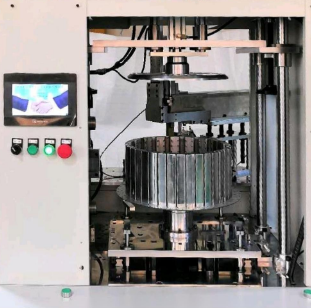
The Difference Between Industrial Centrifugal Fans and Axial Flow Fans
Understanding the differences between centrifugal and axial flow fans is essential for selecting the right fan for specific applications.
Axial Fan Advantages
Axial fans move air parallel to the fan’s axis, offering high airflow rates with lower pressure. They are ideal for applications requiring large volumes of air over a wide area, such as cooling towers and ventilation systems. Axial fans are typically more compact and less expensive than centrifugal fans.
Centrifugal Fan Advantages
Centrifugal fans, on the other hand, move air perpendicular to the fan’s axis, providing higher pressure at lower airflow rates. They are better suited for applications requiring high static pressure, such as HVAC systems, industrial ventilation, and dust collection. Centrifugal fans are generally more robust and durable, capable of handling harsh operating conditions.
Why Choose Altron’s Industrial Fan Automation Machinery Service?
Altron is a leading provider of automation machinery for industrial fan manufacturing, offering advanced solutions that enhance productivity, quality, and efficiency.
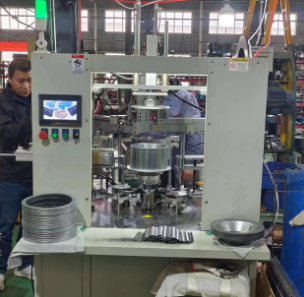
Cutting-Edge Technology
Altron’s machinery incorporates the latest technological advancements, including CNC controls, laser guidance, and automated welding systems. These innovations ensure precise manufacturing and consistent quality, reducing the reliance on skilled labor and minimizing errors.
Comprehensive Solutions
From design and prototyping to manufacturing and testing, Altron provides comprehensive solutions tailored to the specific needs of industrial fan manufacturers. Their equipment is designed to streamline production processes, improve efficiency, and reduce costs.
Exceptional Support and Service
Altron is committed to providing exceptional customer support and service. Their team of experts offers training, maintenance, and technical assistance to ensure that customers get the most out of their machinery. This commitment to customer satisfaction sets Altron apart as a trusted partner in the industry.
Conclusion
In conclusion, the manufacturing and welding of industrial centrifugal fan housing involve advanced techniques and precision engineering. Industrial Fans Housing Suppliers like Altron provide innovative solutions such as Dual-Gun Centrifugal Fan Casing Laser Welding, Gantry Stiffener Auto Vision Welding, Centrifugal fan housing Forming, Multi-wing Centrifugal Fan lmpeller Forming and Punching, etc, that enhance productivity and ensure high-quality results. With their critical role in various industries, centrifugal fans continue to be an essential component in maintaining optimal industrial operations.


